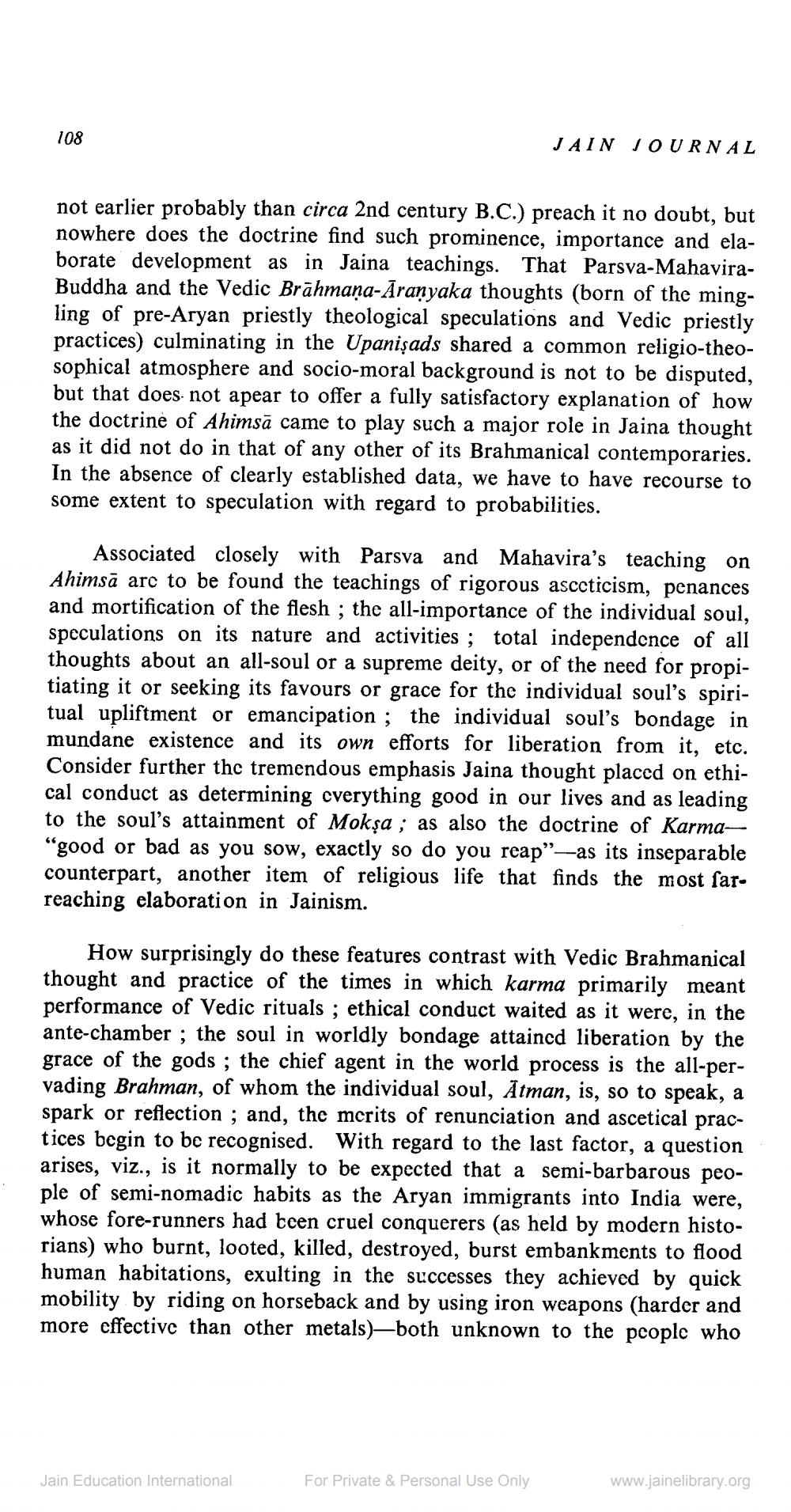________________
108
not earlier probably than circa 2nd century B.C.) preach it no doubt, but nowhere does the doctrine find such prominence, importance and elaborate development as in Jaina teachings. That Parsva-MahaviraBuddha and the Vedic Brāhmaṇa-Āraṇyaka thoughts (born of the mingling of pre-Aryan priestly theological speculations and Vedic priestly practices) culminating in the Upanisads shared a common religio-theosophical atmosphere and socio-moral background is not to be disputed, but that does not apear to offer a fully satisfactory explanation of how the doctrine of Ahimsa came to play such a major role in Jaina thought as it did not do in that of any other of its Brahmanical contemporaries. In the absence of clearly established data, we have to have recourse to some extent to speculation with regard to probabilities.
JAIN JOURNAL
Associated closely with Parsva and Mahavira's teaching on Ahimsa arc to be found the teachings of rigorous asceticism, penances and mortification of the flesh; the all-importance of the individual soul, speculations on its nature and activities; total independence of all thoughts about an all-soul or a supreme deity, or of the need for propitiating it or seeking its favours or grace for the individual soul's spiritual upliftment or emancipation; the individual soul's bondage in mundane existence and its own efforts for liberation from it, etc. Consider further the tremendous emphasis Jaina thought placed on ethical conduct as determining everything good in our lives and as leading to the soul's attainment of Mokşa; as also the doctrine of Karma"good or bad as you sow, exactly so do you reap"-as its inseparable counterpart, another item of religious life that finds the most farreaching elaboration in Jainism.
How surprisingly do these features contrast with Vedic Brahmanical thought and practice of the times in which karma primarily meant performance of Vedic rituals; ethical conduct waited as it were, in the ante-chamber; the soul in worldly bondage attained liberation by the grace of the gods; the chief agent in the world process is the all-pervading Brahman, of whom the individual soul, Atman, is, so to speak, a spark or reflection; and, the merits of renunciation and ascetical practices begin to be recognised. With regard to the last factor, a question arises, viz., is it normally to be expected that a semi-barbarous people of semi-nomadic habits as the Aryan immigrants into India were, whose fore-runners had been cruel conquerers (as held by modern historians) who burnt, looted, killed, destroyed, burst embankments to flood human habitations, exulting in the successes they achieved by quick mobility by riding on horseback and by using iron weapons (harder and more effective than other metals)-both unknown to the people who
Jain Education International
For Private & Personal Use Only
www.jainelibrary.org




